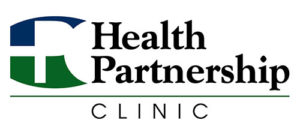Immunizations Save Lives – Protection for Adults and Children
 Post written by Mayra Lemus, Lead Pediatric Medical Assistant, Vaccine Manager, Health Partnership Clinic
Post written by Mayra Lemus, Lead Pediatric Medical Assistant, Vaccine Manager, Health Partnership Clinic
Vaccines help prevent dangerous and sometimes deadly diseases. In recent years, we hear of more and more cases of measles and mumps in the United States which is scary. The exact reason for the rise and fall of diseases can be complex and difficult to pin down as there are many contributing factors. Through education, we hope to curb these resurgences.
The month of August is recognized as National Immunization Awareness Month. The goal is to help get the word out about the importance of vaccines, not only for children but also for adults.
According to the Center for Disease Control and Prevention (CDC), your child’s first vaccines protect against seven childhood diseases that can be prevented:
Diphtheria (the ‘D’ in DTaP vaccine)
Signs and symptoms include a thick coating in the back of the throat that can make it hard to breathe. Diphtheria can lead to breathing problems, paralysis and heart failure.
About 15,000 people died annually in the United States from diphtheria before there was a vaccine.
Tetanus (the ‘T’ in DTaP vaccine; also known as Lockjaw)
Signs and symptoms include a painful tightening of the muscles, usually all over the body. Tetanus can lead to stiffness of the jaw that can make it difficult to open the mouth or swallow.
Tetanus kills about one person out of every 10 who get it.
Pertussis (the ‘P’ in DTaP vaccine, also known as Whopping Cough)
Signs and symptoms include violent coughing spells that can make it hard for a baby to eat, drink or breathe. These spells can last several weeks. Pertussis can lead to pneumonia, seizures, brain damage, or death. Pertussis can be very dangerous in infants.
Most pertussis deaths occur in babies younger than three months of age.
Hib (Haemophilus influenzae type b)
Signs and symptoms can include fever, headache, stiff neck, cough and shortness of breath. There might not be any signs or symptoms in mild cases. Hib can lead to meningitis (infection of the brain and spinal cord coverings); pneumonia; infections of the ears, sinuses, blood, joints, bones and covering of the heart; brain damage; severe swelling of the throat, making it hard to breathe; and deafness.
Children younger than five years of age are at greatest risk for Hib disease.
Hepatitis B
Signs and symptoms include tiredness, diarrhea and vomiting, jaundice (yellow skin or eyes) and pain in muscles, joints and stomach. But usually there are no signs or symptoms at all. Hepatitis B can lead to liver damage and liver cancer. Some people develop chronic (long term) hepatitis B infection. These people might not look or feel sick, but they can infect others.
Hepatitis B can cause liver damage and cancer in one child out of four who are chronically infected.
Polio
Signs and symptoms include flu-like illness, or there may be no signs or symptoms at all. Polio can lead to permanent paralysis and death.
In the 1950s, polio paralyzed more than 15,000 people every year in the U.S.
Pneumococcal Disease
Signs and symptoms include fever, chills, cough and chest pain. In infants, symptoms can also include meningitis, seizures and sometimes rash. Pneumococcal disease can lead to meningitis (infection of the brain and spinal cord coverings); infections of the ears, sinuses and blood; pneumonia; deafness and brain damage.
About one out of 15 children who get pneumococcal meningitis will die from the infection.
 Vaccines
Vaccines
Children need immunizations at birth, two, four, six and 12-15 months, and one to two years of age to protect them against 14 vaccine-preventable diseases. Now is a great time to double check your children’s immunization records to make sure they are up to date. Make sure your children are protected!
But vaccines are not only for children! Adults should be vaccinated to stay protected from serious illnesses like the flu, measles and pneumonia.
According to the CDC, throughout your life you need immunizations to protect against:
- Seasonal influenza (flu) for adults of all ages
- Shingles for healthy adults age 50 and over
- Pneumococcal for adults 65 years or older or with risk conditions such as decreased immune function, cigarette smoking or chronic heart, lung, liver or renal disease
- Hepatitis B for adults who have diabetes or are at risk of diabetes
- Tetanus, diphtheria and pertussis (whopping cough) for all adults who have not been previously received a Tdap vaccine
- Other vaccinations you may need include those that protect against HPV (human papillomavirus, which can cause certain cancers), hepatitis A, meningococcal disease, chickenpox (varicella), and measles, mumps and rubella.
It is important to note that if you received certain vaccines as a child, you may no longer be protected. Vaccines such as whopping cough or tetanus require a booster. Getting vaccines helps protect your children, especially babies who are too young to be vaccinated.
If you are planning to travel to certain parts of the developing world, you may encounter an illness that you would never find at home such as yellow fever. You can check the CDC’s website for details about what immunizations you may need for your destination.
During National Immunization Month, you are urged to talk to your health care provider about your specific vaccination needs.






